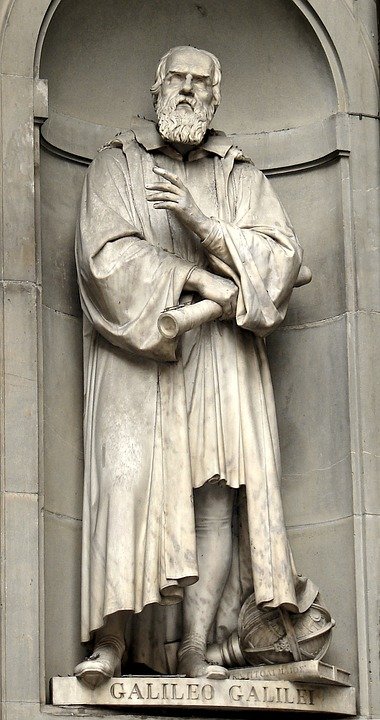A few days ago I was going down in the elevator of my building with my three-year-old son. The elevator has latticed doors so it is possible to see through them the passage of the floors. My son then pointing to them told me:
-Look, dad, that's going up.
-Yes, kid. But in reality that is not moving, it is us who are going down.
-Nooo. I can see that going up ...
I did not insist, after all the observation of my son deserved to be examined a little more in depth. Is that the elevator that moves at a constant velocity (either going down or going up) is what in physics is called an inertial reference system. But what is an inertial reference system?
Eppur si muove
The person who introduced the notion of what is now known as the inertial reference system was Galileo Galilei. He drew attention to the fact that if we were in the cabin of a ship with no possibility of looking out, we would have no way of distinguishing whether the ship is still or moving uniformly (without variations of speed or direction) .[1] for example, if we jump, we would fall in the same place whether the boat is still or advancing. The same thing if we throw a coin, the place where it will fall will not depend on the movement of the ship as long as it is uniform.
Galileo's ship and my son's elevator can be understood as inertial reference systems. More broadly, any reference system as long as its velocity does not vary (either in magnitude or in direction) [2] will be inertial. Now, for a body to vary its velocity, it is necessary that a force be applied to it. As long as no force is applied, the body will maintain its state of uniform motion (or at rest if it was at rest). This is the principle of inertia, which is the first of the laws of Newtonian mechanics. [3]
These notions were opposed to the Aristotelians ideas that were most accepted at that time. Aristotle argued that for something to remain in constant motion, a force must be applied. That is to say that Aristotle could not glimpse the principle of inertia. In fact, the principle of inertia can be conceived if we accept the idea of an empty space, devoid of matter (friction), which was not part of Aristotle's worldview. So it is understandable that he couldn't formulate this principle.
As the story tells, the revolutionary ideas of Galileo brought to him many problems with the Holy Inquisition, which defended the Aristotelian ideas. The famous phrase that is attributed to him: "And nevertheless it moves", refers to the movement of the Earth (heliocentrism), questioned by the Church (geocentrism). Imagine now that the Earth is an elevator that descends at a constant speed through a building and then we will have reproduced Galileo's judgment.
Oh no! My son is an inquisitor!
[1] It is worth clarifying that the fact that one can not look outside in Galileo's example does not really constitute a condition. If from the window of our cabin we see another boat in motion relative to ours, we could not say if it is that ship that moves or if it is ours or if both move. As my son in the elevator understood that what was moving was the building.
[2] Velocity in physics is represented as a vector, which means that it can vary both in magnitude (variation of speed) and in direction.
[3] Being rigorous, due to the friction forces that tend to stop the movement, to keep the ship or the elevator at constant speed, a force (wind, motors) must be applied to counter those. But in physics this kind of experiment must be thought idealized, that is, without the intervention of friction forces.
